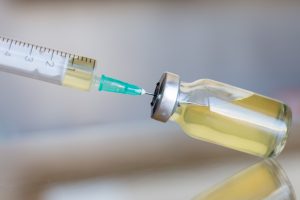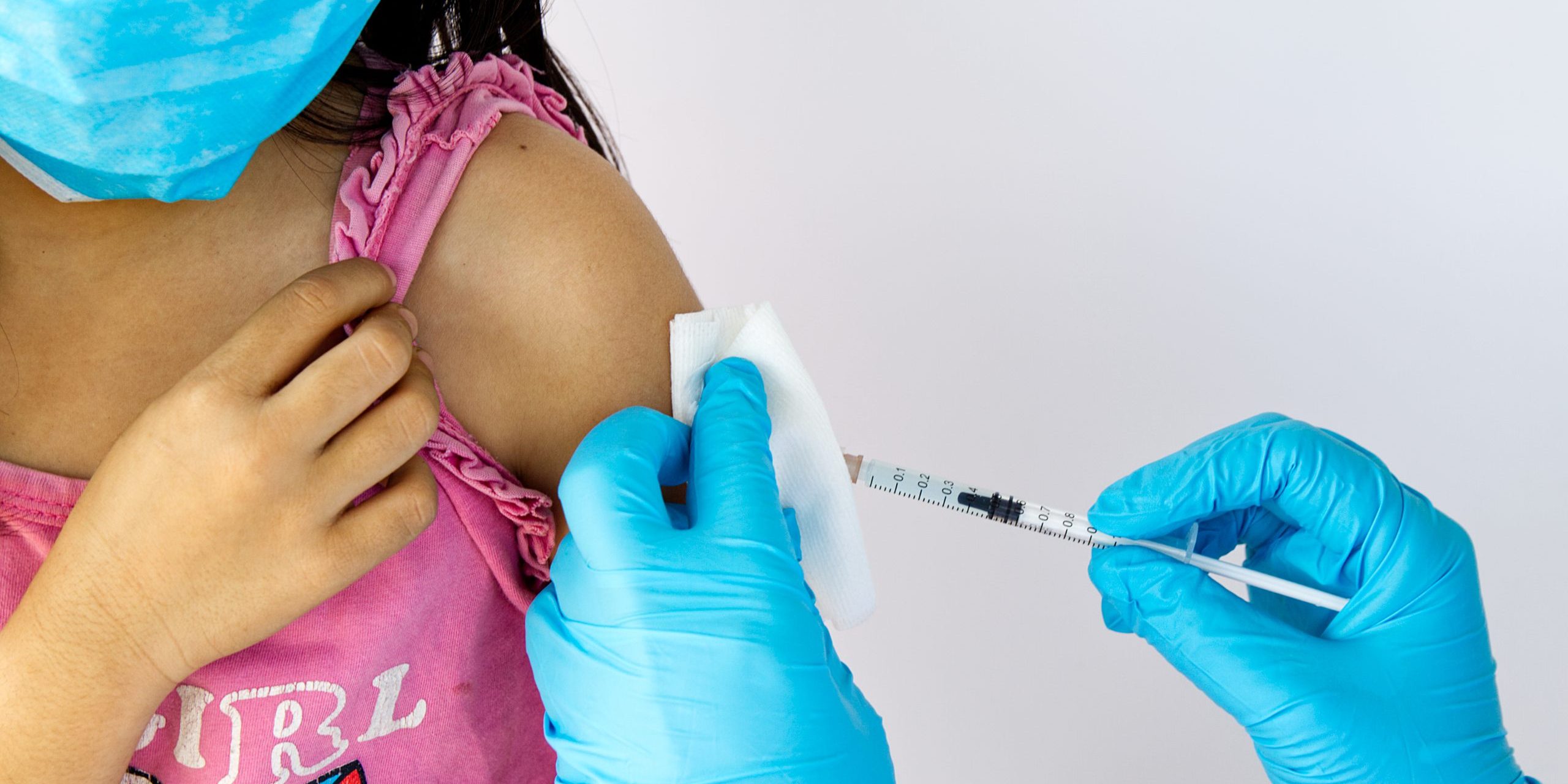
Yasodhara Kapuge is a peacebuilding and policy professional with a Master’s in Conflict and Peace Studies from the University of Colombo and a BSc (Hons) in Biomedical Science from Northumbria University, UK. With over 12 years of experience, she has worked across public health, youth empowerment, gender equality, and conflict resolution, contributing to global research on hypertension, diabetes, and COVID-19. She is passionate about advancing inclusive governance, diplomacy, and peace and conflict studies.
When Sri Lanka was engulfed in one of the world’s longest civil wars (1983–2009), bombs and gunfire often drowned out everyday life. Yet, even as conflict tore communities apart, Sri Lanka quietly sustained one of the most successful childhood immunization programs in South Asia. While hospitals were destroyed, families displaced, and health workers faced security threats, vaccination coverage rarely fell below 95% (Epidemiology Unit, 2019). This paradox; the ability of a state at war to protect its children against preventable diseases deserves closer attention.
The secret lies in multilevel governance, a system where in Sri Lanka central leadership set clear policy direction while regional and local actors adapted implementation to the realities of war. By combining centralized policymaking, decentralized delivery, international collaboration, and community engagement, Sri Lanka turned vaccines into both a public health shield and a peacebuilding tool (Abeysinghe, 2020).
A Landscape of Challenges
The Sri Lankan civil war displaced hundreds of thousands, devastated infrastructure, and restricted access to basic services. In the North and East, where fighting was heaviest, hospitals and clinics were bombed, vaccine supply chains disrupted, and healthcare workers frequently faced threats from armed groups (Siriwardhana & Wickramage, 2014).
In such a fragile context, vaccination efforts faced a range of significant challenges:
-
Health workers were often caught in crossfire or accused of political affiliation. Some were even abducted, creating shortages of skilled staff (Reilley, Simpson, Ford, & DuBois, 2002).
-
More than 60% of healthcare facilities in the Northern Province were destroyed or inoperable, forcing reliance on temporary setups and mobile clinics (WHO, 2014).
-
Families fleeing violence lost immunization records, complicating tracking of children’s vaccination status (UNICEF, 2019b).
-
Military checkpoints, road closures, and power outages jeopardized the vaccine cold chain (GAVI, 2015).
-
Communities in rebel-held areas feared vaccines were politically motivated, with rumors about vaccine-induced sterility and side effects circulating (Siriwardhana & Wickramage, 2014).
In many conflicts, these conditions create public health catastrophes—as seen in Syria and Yemen, where vaccine-preventable diseases have resurged as civil war has raged (Heisler, Baker, & McKay, 2015). Yet Sri Lanka remained an exception.
Centralized Leadership, Decentralized Delivery
At the core of Sri Lanka’s success was a strong, centralized Ministry of Health (MoH). The Epidemiology Unit oversaw the Expanded Programme on Immunization (EPI), secured vaccines, and managed cold chain systems (Epidemiology Unit, 2017). National standards and policies were maintained, preventing fragmentation. Yet, implementation was decentralized. Regional Directors of Health Services (RDHS) and Medical Officers of Health (MOHs) had autonomy to adapt strategies to local conditions (Nagai, Abraham, Okamoto, Kita, & Aoyama, 2007). Public Health Midwives (PHMs) conducted door-to-door vaccination, ensuring children in remote or insecure areas were reached. This balance—firm central leadership combined with flexible local execution—proved critical.
Negotiating “Days of Tranquility”
One of the most innovative strategies was the negotiation of temporary ceasefires known as “Days of Tranquility”. Beginning in 1995, the government and the Liberation Tigers of Tamil Eelam (LTTE) agreed to pause hostilities to allow vaccination drives, especially for polio and measles. These truces were brokered by UNICEF and the World Health Organization (WHO), who acted as neutral guarantors (UNICEF, 2016; WHO, 2014). During these windows, health workers entered rebel-held zones without fear of attack, vaccinating tens of thousands of children. The effort not only saved lives but also built a fragile trust that humanitarian needs could transcend political divides (Gamage, 2021).
Mobile Clinics and Community Outreach
With hospitals bombed and infrastructure in ruins, the government introduced mobile vaccination clinics. These units often staffed by PHMs and supported by NGOs, provided routine immunizations, maternal health services, and health education (Nagai et al., 2007). Community outreach was equally vital. Religious leaders, teachers, and local volunteers reassured families about vaccine safety. By mobilizing trusted community figures, the government countered misinformation and built resilience against vaccine hesitancy (Abeysinghe, 2020). A UNICEF survey in 2014 revealed that over 99% of Sri Lankan families retained their children’s vaccination records, even in war-affected areas (UNICEF, 2019b). This extraordinary statistic reflects the strength of community trust in immunization.

International Collaboration and Vaccine Financing
Multilevel governance extended beyond domestic actors. International partners played indispensable roles:
-
UNICEF & WHO ensured steady vaccine supply, maintained cold chain infrastructure, and helped broker ceasefires (UNICEF, 2016; WHO, 2014).
-
Gavi, the Vaccine Alliance funded immunization campaigns and infrastructure improvements (GAVI, 2015).
-
ICRC facilitated safe passage of vaccines and staff through humanitarian corridors (UNICEF, 2016).
Technological innovations such as solar-powered refrigerators in areas without electricity kept vaccines viable. Together, these collaborations ensured Sri Lanka never faced vaccine stockouts despite the war (Gamage, 2021).
Data, Trust, and Universality
Even during conflict, Sri Lanka maintained a culture of data-driven decision-making. Child Health Development Records (CHDRs) tracked vaccination status, while regional epidemiologists monitored outbreaks (Epidemiology Unit, 2019). Surveillance systems helped target gaps and prevent disease resurgence. Crucially, vaccines remained free and universally accessible, including in camps for internally displaced persons. By eliminating financial barriers, the government underscored that immunization was a right, not a privilege (UNICEF, 2019a).
Health Security Amidst War
The results of Sri Lanka’s vaccination efforts speak for themselves:
-
By the late 1990s, Sri Lanka maintained over 95% coverage for polio, measles, and DPT vaccines, even in conflict-affected provinces (Epidemiology Unit, 2019).
-
Outbreaks of vaccine-preventable diseases were rare compared to other war-torn countries (Siriwardhana & Wickramage, 2014).
-
Post-war catch-up campaigns filled immunization gaps, and by 2019 Sri Lanka had eliminated polio, neonatal tetanus, and measles (WHO, 2020).
These achievements were not accidental; they were the product of layered governance, resilient institutions, and international solidarity.
Comparing Sri Lanka with Federal Nations
While Sri Lanka is a unitary state, its immunization success during conflict echoes lessons from federal countries where multilevel governance is embedded in the constitution. But interestingly, when compared to some federations that have also faced the challenge of vaccination during internal conflict, Sri Lanka has maintained far higher vaccine coverage rates:
-
India has faced insurgencies in Jammu & Kashmir and the Northeast. While federal procurement and state-level delivery enabled outreach through Accredited Social Health Activists (ASHAs), national immunization coverage still lagged. For example, India’s DTP3 coverage was around 70–75% in the early 2000s, compared to Sri Lanka’s consistent 95%+ during the same period (World Bank, 2021).
-
Nigeria, battling the Boko Haram insurgency, relied on “hit-and-run” campaigns backed by federal and international support. However, insecurity led to missed children and outbreaks: polio persisted in Nigeria until 2016, while Sri Lanka eliminated it two decades earlier (Nasir et al., 2016).
-
Pakistan also attempted negotiated truces for polio campaigns, similar to Sri Lanka’s “Days of Tranquility.” But mistrust, violence against vaccinators, and governance fragmentation left coverage uneven. Polio remains endemic in Pakistan, underscoring how fragile these arrangements can be (Nnadi et al., 2017).
The comparison shows that whether in unitary or federal contexts, layered governance is indispensable but outcomes depend heavily on decentralization, trust, continuity, and system resilience (Mugali et al., 2017). Sri Lanka’s success can be attributed to the wartime improvisations which effected an approach that:
-
Combined central oversight with decentralized delivery through Regional Directors of Health Services and Public Health Midwives (Nagai et al., 2007);
-
Built trust networks by working with community and religious leaders (Abeysinghe, 2020);
-
Maintained continuity in national immunization policies despite conflict (Epidemiology Unit, 2019);
-
Strengthened system resilience, especially in cold-chain management and post-war catch-up campaigns (WHO, 2020).
In contrast, India (Heller, Harilal, & Chaudhuri, 2007), Nigeria (Okorie et al., 2022), and Pakistan (Haider, 2022) struggled with weaker local trust, inconsistent policies, and fragmented decentralization highlighting why Sri Lanka’s model stands out as both exceptional and instructive.
Lessons for Other Conflict Zones
Sri Lanka’s case offers lessons that extend beyond its borders:
-
Centralized policy with decentralized execution ensures consistency while allowing flexibility in volatile regions.
-
Negotiated ceasefires for health as seen in the “Days of Tranquility”, show that humanitarian priorities can cut across battle lines.
-
Mobile and adaptive delivery models (clinics, outreach workers) are essential when infrastructure collapses.
-
International collaboration provides not just funding but political leverage and logistical capacity.
-
Community trust-building through local health workers and religious leaders is indispensable for countering misinformation.
-
Post-conflict catch-up immunization consolidates gains and prevents resurgence.
Governance as Peacebuilding
Sri Lanka’s immunization success highlights a broader truth: governance is not only about institutions, but about the relationships between state, community, and international actors. Multilevel governance allowed Sri Lanka to deliver vaccines during war, but it also nurtured trust, cooperation, and resilience (Gamage, 2021). In this sense, vaccines became more than just a medical intervention. They became a peacebuilding tool; a symbol that even amidst conflict, the state could still protect its people.
Conclusion
Sri Lanka’s ability to achieve near-universal childhood immunization during a brutal civil war stands as a remarkable case of resilience in a conflict-affected society. By leveraging multilevel governance; centralized leadership, decentralized delivery, negotiated ceasefires, international collaboration, and community engagement, the country not only protected children’s health but also demonstrated how governance can bridge divides. For other nations grappling with conflict, Sri Lanka offers a vital lesson: even in the most fragile settings, protecting human security is possible when governance structures, local communities, and international actors work together. In the end, the story of Sri Lanka’s immunization success is not just about vaccines. It is about how governance, when layered, flexible, and inclusive, can transform a tool of public health into a lifeline of hope amidst war.
References
Abeysinghe, N. (2020). Sri Lanka’s immunization success story: Resource mobilization. Webinar: LNCT Member Highlight: Sri Lanka’s Transition from Gavi Support: LNCT.
Epidemiology Unit. (2017). Functional Organogram of the Epidemiology Unit, Ministry of Health, Sri Lanka. Retrieved from http://epid.gov.lk/web/index.php?option=com_content&view=article&id=177&Itemid=482&lang=en
Epidemiology Unit. (2019). National Immunization Programme of Sri Lanka. Retrieved from https://www.epid.gov.lk/web/index.php?option=com_content&view=article&id=137&Itemid=426&lang=en
Gamage, A., Kapuge, Y., Abeysinghe, N. and Pieris, S. (2021). Country Case Study: Lessons Learned from Sri Lanka’s Experience Transitioning from Gavi Support – LNCT. . LNCT [online]. Retrieved from <https://lnct.global/resources/country-case-
GAVI. (2015). Sri Lanka: five steps to vaccine success. VaccineWork. Retrieved from https://www.gavi.org/vaccineswork/sri-lanka-five-steps-to-vaccine-success
Haider, G. (2022). Constraints to Decentralization and Local Government; Historical Persepctive (MPhil in Public Policy). Pakistan Institute of Development Economics, Islamabad, Pakistan. Retrieved from https://file-thesis.pide.org.pk/pdf/mphil-public-policy-2019-ghulam-haider–constraints-to-decentralization-and-local-government-historical-perspective.pdf?utm_source=chatgpt.com
Heisler, M., Baker, E., & McKay, D. (2015). Attacks on Health Care in Syria – Normalizing Violations of Medical Neutrality? The New England journal of medicine, 373. doi:10.1056/NEJMp1513512
Heller, P., Harilal, K. N., & Chaudhuri, S. (2007). Building Local Democracy: Evaluating the Impact of Decentralization in Kerala, India. World Development, 35(4), 626-648. doi:https://doi.org/10.1016/j.worlddev.2006.07.001
Mugali, R. R., Mansoor, F., Parwiz, S., Ahmad, F., Safi, N., Higgins-Steele, A., & Varkey, S. (2017). Improving immunization in Afghanistan: results from a cross-sectional community-based survey to assess routine immunization coverage. BMC Public Health, 17(1), 290. doi:10.1186/s12889-017-4193-z
Nagai, M., Abraham, S., Okamoto, M., Kita, E., & Aoyama, A. (2007). Reconstruction of health service systems in the post-conflict Northern Province in Sri Lanka. Health policy (Amsterdam, Netherlands), 83, 84-93. doi:10.1016/j.healthpol.2006.12.001
Nasir, U. N., Bandyopadhyay, A. S., Montagnani, F., Akite, J. E., Mungu, E. B., Uche, I. V., & Ismaila, A. M. (2016). Polio elimination in Nigeria: A review. Hum Vaccin Immunother, 12(3), 658-663. doi:10.1080/21645515.2015.1088617
Nnadi, C., Etsano, A., Uba, B., Ohuabunwo, C., Melton, M., Wa Nganda, G., . . . Durry, E. (2017). Approaches to Vaccination Among Populations in Areas of Conflict. J Infect Dis, 216(suppl_1), S368-s372. doi:10.1093/infdis/jix175
Okorie, C. O., Ogba, F. N., Iwuala, H. O., Arua, C., Felix, N., & Nwosumba, V. C. (2022). Decentralization of South Eastern Nigeria’s Local Governments and Achievement of Mandates Enshrined in Nigeria’s 1999 Constitution. SAGE Open, 12(2), 21582440221089975. doi:10.1177/21582440221089975
Reilley, B., Simpson, I., Ford, N., & DuBois, M. (2002). Conflict in Sri Lanka. Sri Lanka’s health service is a casualty of 20 years of war. BMJ (Clinical research ed.), 324, 361.
Siriwardhana, C., & Wickramage, K. (2014). Conflict, forced displacement and health in Sri Lanka: a review of the research landscape. Confl Health, 8(1), 22. doi:10.1186/1752-1505-8-22
UNICEF. (2016). The UNICEF Health System Strengthening Approach. [Online]. Retrieved from <https://www.unicef.org/health/files/HSS_Approach_Synopsis_Final_10Mar16.pdf>
Sustaining Vaccination Coverage- Continued national commitment to primary health care with a strong focus on community engagement: A case study from Sri Lanka (2019a).
UNICEF. (2019b). Sustaining Vaccination Coverage: Continued national commitment to primary health care with a strong focus on community engagement. Retrieved from Sri Lanka: https://www.unicef.org/rosa/media/5191/file/UNICEF_Sustaining_Vaccination_Coverage_SriLanka.pdf
WHO. (2014). Paradox of healthcare in Sri Lanka: A snapshot of the last decade form a patnership of sixty years. Retrieved from https://iris.who.int/bitstream/handle/10665/255195/ParadoxofhealthcareinSri%20Lanka.pdf?sequence=1&isAllowed=y
WHO. (2020). Putting Women and Children First: Immunization Resumes in Sri Lanka amidst the COVID-19 Pandemic. Retrieved from https://www.who.int/southeastasia/news/feature-stories/detail/putting-women-and-children-first-immunization-resumes-in-sri-lanka-amidst-the-covid-19-pandemic
World Bank. (2021). World Development Indicators: Immunization coverage (DTP3, measles, polio) – India, Nigeria, Pakistan, Sri Lanka. . Retrieved from: https://data.worldbank.org/indicator







